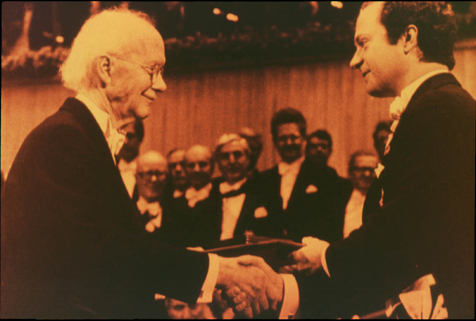
Faculty Research 1980 - 1989
B cell maturation factor: effects on various cell populations.
Document Type
Article
Publication Date
1984
Keywords
Antibody-Producing-Cells: im, B-Lymphocytes: cl, im, Cell-Line, Cell-Separation, Cell-Survival, Growth-Substances: ph, Hemolytic-Pl{_aque-Technic, Immunoglobulins-Heavy-Chain: bi, Immunoglobulins-Light-Chain: bi, Kinetics, Lymphocyte-Transformation, Lymphokines: ph, Mice, Mice-Inbred-CBA, Mice-Inbred-C3H, Mice-Inbred-C57BL, Mice-Inbred-DBA, Spleen: cy, SUPPORT-NON-U-S-GOVT, SUPPORT-U-S-GOVT-P-H-S
First Page
845
Last Page
850
JAX Source
J-Immunol. 1984 Feb; 132(2):845-50.
Grant
RR05545, CA35845, AI20232
Abstract
B cell maturation factor (BMF) is a lymphokine that promotes the maturation of resting murine splenic B lymphocytes, and the analogous B cell tumor line WEHI-279, to the state of active immunoglobulin (Ig) secretion. All subsets of normal B cells examined, including neonatal and adult B cells, B cells from various organs, and B cells from CBA/N mice, are inducible by BMF. Induction of Ig secretion is independent of thymus-derived cells, LPS receptors, and MHC haplotype, because nude, C3H/He, and mice of many strains are equally responsive to BMF. Purified B cells prepared by using a fluorescence-activated cell sorter also respond to BMF, showing that BMF directly interacts with and triggers Ig secretion by B cells. In limiting dilution cultures, most normal resting splenic B cells or WEHI-279 B tumor cells are inducible by BMF. By using the WEHI-279 cells as a model system, specific aspects of the BMF response have been analyzed. In terms of the degree of stimulation observed, the primary mechanism for the induction of Ig secretion by BMF is an enhanced and balanced synthesis of Ig heavy (H) and light (L) chains. A less significant component of the induced Ig secretion is an increase in the ratio of secretory to membrane H chains produced. Kinetically, the shift in the ratio of secretory to membrane H chain forms occurs first, and this is followed by the increased synthesis of both L and H chains. Responding B cells also die during this induction process. Although the changes in the ratio of H chain forms, H and L synthesis, and cell viability take several days to occur, BMF will program significant later responses after only 1 or a few hr of interaction with target B cells.
Recommended Citation
Sidman CL,
Marshall JD.
B cell maturation factor: effects on various cell populations. J-Immunol. 1984 Feb; 132(2):845-50.

